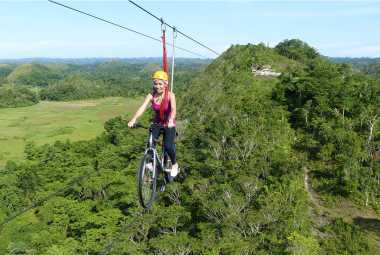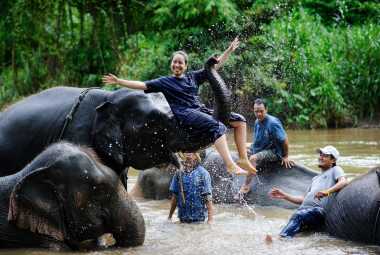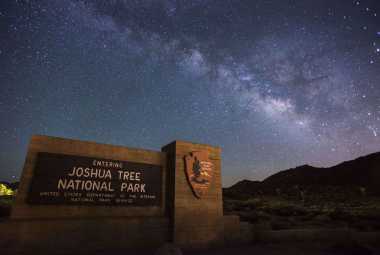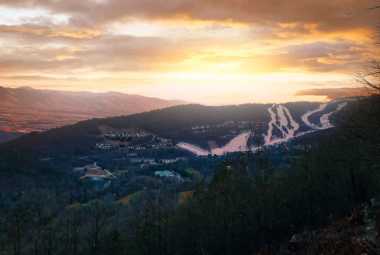Image by astropics.com
*Vacation Mode is a for-profit site. It contains paid banner advertisements that are generated and managed by a third-party network. This site also includes relevant affiliate links (both in the content and on the sidebar) all of which we do our best to clearly mark as such.
Quick Summary
- Great Basin National Park is renowned as a designated dark-sky destination ideal for stargazing due to its remote location, high altitude, and minimal light pollution.
- The park offers spectacular views of the Milky Way, meteor showers, aurora borealis, star clusters, galaxies, and constellations.
- Dark-sky destinations are chosen for their minimal light pollution, allowing for clear views of celestial bodies, and often feature telescopes and observatories for enhanced viewing.
- Great Basin National Park's Dark Sky designation ensures an ideal environment for astronomical observation, offering educational programs and stargazing events.
- The park's unique conditions—remote location, high elevation, lack of light pollution, clear skies, and low humidity—create optimal stargazing opportunities.
- Visitors can observe celestial phenomena like the Milky Way galaxy, constellations, planets, meteor showers, and the aurora borealis in stunning clarity.
- Nighttime activities at the park include night photography, camping, immersive hiking, star parties, encountering nocturnal animals, stargazing tours, and astronomy programs.
- Preparing for a dark-sky trip involves planning visits during the new moon for better visibility, bringing appropriate equipment (telescopes, binoculars, star maps), and dressing for the weather.
- Benefits of visiting dark-sky destinations include connecting with nature, unplugging from technology, learning about astronomy and conservation, and supporting night sky preservation efforts.
- Great Basin National Park is highlighted as a top dark-sky destination for its dark skies, offering best stargazing experiences during the new moon phase, and provides various stargazing events, programs, equipment recommendations, camping opportunities, and other outdoor activities.
Are you looking for a unique and awe-inspiring experience under the stars? Great Basin National Park is a designated dark-sky destination that offers unparalleled stargazing opportunities. With its remote location, high altitude, and minimal light pollution, this park provides the perfect setting for observing the wonders of the night sky.
From the Milky Way Galaxy to meteor showers and aurora borealis, the park offers a glimpse into the universe like never before. Join us as we explore why Great Basin National Park is a must-visit destination for stargazers and astronomy enthusiasts alike.
What Is a Dark-Sky Destination?
A dark-sky destination is a location renowned for its pristine night sky, offering unparalleled views of celestial bodies such as stars, planets, and galaxies.
These destinations are specifically chosen for their minimal light pollution, ensuring a clear and unobstructed view of the heavens above. Star-gazing enthusiasts flock to these remote locations to witness the beauty of the night sky in its purest form. Park rangers play a crucial role in preserving the darkness of these areas, educating visitors on the importance of minimizing light interference.
Telescopes and observatories are often set up in these dark-sky destinations, providing visitors with enhanced viewing experiences and the opportunity to delve deeper into the mysteries of the universe.
Why Visit Great Basin National Park for Stargazing?
Great Basin National Park is a prime destination for stargazing due to its exceptional night skies, perfect for observing the Milky Way, star clusters, and other celestial wonders.
The park's official Dark Sky designation ensures minimal light pollution, creating an ideal environment for astronomical observation. Visitors are enthralled by the dazzling array of stars visible to the naked eye, offering a mesmerizing experience that connects them with the vastness of the universe.
The park also hosts educational programs and stargazing events, allowing guests to deepen their understanding of the cosmos. Whether you're a seasoned astronomer or a casual observer, the allure of the night sky at Great Basin National Park is truly captivating.
Milky Way Time Lapse - Great Basin Nevada
Video by Alton Vance
What Makes Great Basin National Park an Ideal Dark-Sky Destination?
Great Basin National Park stands out as an ideal dark-sky destination, boasting unparalleled views of the Milky Way, constellations, and a captivating night-time experience.
Visitors to this park are drawn not only to the breathtaking celestial displays but also to the exceptional clarity of the night skies. Its remote location away from city lights enhances stargazing opportunities, allowing for a truly immersive experience in the natural darkness. The park's high elevation further contributes to the crispness of the night air, creating optimal conditions for observing celestial phenomena. With minimal light pollution, visitors can marvel at the intricate beauty of stars, planets, and galaxies, feeling a profound connection to the vast universe above.
Location and Altitude
Great Basin National Park's location and high altitude contribute to its exceptional dark-sky qualities, providing unobstructed views of the night sky from its mountainous terrain.
Nestled in the heart of Nevada, the park's strategic positioning shields it from light pollution, allowing for spectacular stargazing experiences. Due to its elevated altitude, visitors can witness the celestial wonders with minimal disturbance, as the crisp mountain air enhances visibility. The park's varied mountain ranges further amplify this effect, creating a surreal backdrop against which the stars, planets, and galaxies appear more vividly. This unique interplay between altitude and positioning makes Great Basin National Park a haven for astronomy enthusiasts and nature lovers alike.
Lack of Light Pollution
Great Basin National Park's designation as a dark-sky reserve ensures minimal light pollution, preserving the park's natural habitat and providing optimal conditions for stargazing and night sky observation.
Maintaining these conditions not only benefits astronomers and stargazing enthusiasts by offering clear views of celestial wonders, but also plays a crucial role in safeguarding the diverse ecosystem within the park. Reduced light pollution positively impacts nocturnal animals' natural habitats, allowing them to thrive in an environment that aligns with their natural rhythms. By prioritizing dark-sky initiatives, Great Basin National Park demonstrates its commitment to protecting the balance of both the night sky spectacle and the biodiversity that inhabits the park.
Clear Skies and Low Humidity
Great Basin National Park's combination of clear skies and low humidity creates an ideal environment for night sky observation, allowing visitors to enjoy crisp, starlit nights and pristine night air.
The lack of light pollution in the park further enhances the stargazing experience, revealing a mesmerizing display of celestial bodies across the vast expanse of the night sky. This unique setting provides an immersive opportunity for astronomy enthusiasts to witness phenomena such as meteor showers and constellations with exceptional clarity.
The refreshing night air not only adds to the sensory delight but also supports the visibility of distant stars and planets, making it a haven for those seeking a profound connection with the universe.
What Can You See at Great Basin National Park?

Great Basin National Park offers a spectacular array of celestial objects, including star clusters, galaxies, constellations, and the mesmerizing phases of the moon.
These astronomical wonders provide a captivating experience for stargazers and astronomy enthusiasts visiting the park. Visitors can witness the dazzling star clusters like the Pleiades and the Hercules Cluster, along with distant galaxies such as the Andromeda Galaxy. The night sky over the park showcases intricate constellations like Orion, Ursa Major, and Cassiopeia, adding a magical touch to the celestial display.
The changing phases of the moon, from crescent to full, create a dynamic backdrop against the dark night canvas, making each night's observation unique and awe-inspiring.
Milky Way Galaxy
The Milky Way galaxy, with its breathtaking display of celestial bodies, illuminates the starry skies of Great Basin National Park, offering a mesmerizing sight for stargazers and astronomers alike.
As night falls in the park, the Milky Way unfurls like a cosmic tapestry, weaving its silvery threads across the heavens. Gazing skyward, one can witness a myriad of stars, planets, and even distant galaxies twinkling in the vast expanse above.
The sheer clarity and darkness of the night sky in this remote location create an unparalleled setting for celestial observation, capturing the imagination and inviting contemplation of the mysteries of the universe. Visitors often find themselves transfixed by the ethereal beauty of the Milky Way, a natural wonder that seems to connect the earthly realm to the infinite wonders of space.
Constellations and Planets
Great Basin National Park offers enchanting views of constellations and planets, captivating astronomy enthusiasts with their celestial beauty and intriguing astronomical significance.
The park's low light pollution and high elevation create the perfect conditions for stargazing, allowing visitors to marvel at the brilliance of stars like Orion, Ursa Major, and the Milky Way. The visibility of planets such as Jupiter, Saturn, and Mars adds to the celestial spectacle, providing a unique opportunity for both seasoned astronomers and amateur stargazers to deepen their understanding of the cosmos.
Witnessing these celestial wonders in the park's pristine night sky ignites a sense of wonder and appreciation for the vastness and beauty of the universe.
Meteor Showers and Aurora Borealis
Great Basin National Park is a prime location for witnessing meteor showers and the enchanting Aurora Borealis, providing a front-row seat to these captivating astronomical events.
Visitors to the park have the exceptional opportunity to marvel at the dazzling streaks of meteors lighting up the night sky and experience the mystical dance of the Northern Lights. These unique astronomical occurrences offer a truly unforgettable experience, allowing individuals to witness firsthand the wonders of the universe. The park's pristine dark skies and high elevation create ideal conditions for observing these natural phenomena, making it a sought-after destination for astronomers, stargazers, and nature enthusiasts alike.
What Activities Can You Do at Great Basin National Park at Night?

Great Basin National Park offers a range of nighttime activities, including night photography, camping under the starlit sky, immersive hiking experiences, engaging star parties, and the chance to encounter nocturnal animals.
The park's dark skies provide the perfect backdrop for capturing stunning nighttime photos, with opportunities to photograph constellations, the Milky Way, and shooting stars.
Camping at Great Basin National Park offers a unique experience of sleeping under a blanket of twinkling stars, immersing visitors in the calm serenity of the night. Hiking under the moonlit glow adds another layer of adventure, allowing guests to explore the park's trails in a whole new light.
The park also hosts special star parties with experts guiding visitors through the mysteries of the night sky. As visitors engage in these activities, they may come across elusive nocturnal wildlife such as bats, owls, and coyotes, creating unforgettable encounters with nature.
Stargazing Tours and Programs
Great Basin National Park offers engaging stargazing tours and astronomy programs that provide visitors with exceptional skywatching opportunities and insights into the wonders of the night sky.
These ranger-led activities not only allow participants to marvel at the brilliance of stars, planets, and constellations but also delve into the scientific aspects of astronomy. Visitors can expect to learn about the vastness of our universe, the history of celestial navigation, and the cultural significance of certain astronomical events. With knowledgeable guides leading the way, guests are treated to a blend of educational content and immersive experiences that make for truly memorable evenings under the stars.
Night Hikes and Camping
Great Basin National Park facilitates night hikes and camping experiences, allowing visitors to immerse themselves in the park's wilderness while adhering to relevant park regulations for a safe and enjoyable stay.
Exploring the park at night opens up a whole new world of sights and sounds, with opportunities to spot elusive nocturnal wildlife and gaze up at the stunning starlit sky. To make the most of the experience, visitors should remember to bring appropriate gear such as headlamps and warm clothing, pack out all trash, and stick to designated trails. By respecting the park's guidelines, hikers and campers can ensure not only their safety but also the preservation of the park's natural beauty for future generations to enjoy.
Astronomy Festivals and Events
Great Basin National Park hosts astronomy festivals and events that offer engaging and educational programs, providing visitors with enriching experiences centered around the wonders of the night sky.
During these festivals, participants have the opportunity to stargaze through high-quality telescopes, guided by experienced astronomers who share fascinating insights about celestial objects and phenomena. Interactive workshops and talks delve into topics such as constellations, galaxies, and the importance of dark sky preservation.
Visitors can also partake in nighttime hikes to explore the park's unique ecosystem under the starlit sky, combining education with outdoor adventure. The blend of science and nature fosters a deep appreciation for the interconnectedness of astronomy and conservation.
How to Prepare for a Dark-Sky Destination Trip?
Preparing for a dark-sky destination trip involves considering factors like the night-time experience, potential astronomical events, adherence to dark-sky policies, and readiness for astrophotography adventures.
To fully immerse yourself in the magic of stargazing, it's essential to pack suitable gear such as a telescope, binoculars, star maps, and a tripod for capturing those awe-inspiring night sky moments. Familiarize yourself with the location's stargazing etiquette, including using red lights to preserve night vision and minimizing light pollution.
Making a checklist of essential items like warm clothing, snacks, water, and a comfortable blanket can help ensure a comfortable and enjoyable experience under the dark, star-filled skies.
Plan Your Visit During a New Moon
Planning your visit to a dark-sky destination during a new moon phase enhances the skywatching experience, providing optimal conditions for stargazing and celestial observation.
During a new moon phase, the absence of moonlight reduces light pollution, allowing for a clearer view of the night sky. This lunar cycle is ideal for observing fainter celestial objects that might be obscured during brighter phases. The darker skies create a heightened sense of immersion, making it easier to spot elusive phenomena like galaxies, nebulae, and meteor showers. By aligning your visit with the new moon, you can fully appreciate the vastness and beauty of the universe, enhancing your connection with the cosmos.
Bring Proper Equipment and Gear
Bringing the proper equipment and gear, including telescopes and night-sky viewing tools, is essential for optimizing your experience at a dark-sky destination and enhancing your observation of celestial wonders.
Without the right gear, you may miss out on the intricate details of distant galaxies and constellations that come alive in the dark sky. Telescopes provide a closer look at celestial bodies, revealing intricate craters on the moon or the rings of Saturn. Night-sky viewing tools, such as star charts and binoculars, help navigate the vast expanse above you. Consider packing red light flashlights to preserve your night vision and a comfortable chair for long hours of stargazing."
Dress Appropriately for the Weather
Dressing appropriately for the weather conditions at a dark-sky destination is crucial for ensuring a comfortable and enjoyable outdoor adventure, allowing you to fully immerse yourself in the night-time experience.
When planning your attire for a trip to a dark-sky destination, remember that temperatures can drop significantly after sunset, so it's wise to layer your clothing for flexibility. Opt for moisture-wicking fabrics to keep you dry in case of unexpected rain or dew. Sturdy shoes are essential for navigating dark paths or rocky terrain. Consider bringing a hat or beanie to keep your head warm, along with gloves to protect your hands from the chilly night air. Being prepared for changing weather conditions will ensure that you can focus on stargazing and enjoying the beauty of the night sky.
What Are the Benefits of Visiting a Dark-Sky Destination?
Visiting a dark-sky destination offers numerous benefits, including the opportunity to connect with nature, delve into astronomy, contribute to conservation efforts, and support initiatives for night sky protection.
Immersing oneself in a dark-sky environment allows for awe-inspiring stargazing experiences, devoid of light pollution, where the cosmos reveals its wonders in all their splendor. By participating in conservation projects in these areas, visitors actively engage in preserving habitats for nocturnal wildlife and reducing light pollution, fostering a symbiotic relationship between humans and the natural world. Responsible tourism practices in dark-sky destinations play a key role in ensuring the longevity of these unique ecosystems, promoting sustainable travel that respects the environment and local communities.
Connect with Nature and the Universe
Visiting a dark-sky destination allows you to connect intimately with nature and the vast universe, offering a profound experience of celestial wonders and promoting outdoor ethics and appreciation for the environment.
The serene darkness of a designated dark-sky location provides a unique canvas where stars twinkle like diamonds and planets dance in harmony. Witnessing shooting stars streak across the heavens instills a sense of wonder and insignificance in the grand scheme of the cosmos.
This experience not only fosters a spiritual connection with the universe but also serves as a powerful reminder of our place in the natural world. Engaging in stargazing sessions leads to a deeper understanding of the importance of protecting our planet and cherishing its beauty.
Relax and Unplug from Technology
Visiting a dark-sky destination offers a chance to relax, unwind, and unplug from technology, promoting sustainable tourism practices and encouraging public outreach for preserving pristine night skies.
Disconnecting from screens and immersing oneself in the natural beauty of a dark-sky location can have profound therapeutic effects on both mind and body. The stillness of the night sky, devoid of artificial lights, allows visitors to slow down, reflect, and appreciate the universe's grandeur.
By embracing sustainable tourism behaviors at these destinations, individuals can actively contribute to the conservation of our planet's fragile ecosystems. Public outreach initiatives play a crucial role in educating communities about the detrimental effects of light pollution and the significance of protecting dark skies for future generations to cherish and learn from.
Learn about Astronomy and Conservation
Visiting a dark-sky destination provides opportunities to learn about astronomy, conservation efforts, and environmental preservation through engaging educational programs and initiatives within the park.
Immersing oneself in the celestial wonders of the night sky at these designated locations not only offers a chance to witness the beauty of the stars, planets, and galaxies but also opens up avenues for understanding the importance of safeguarding these natural resources.
By participating in stargazing sessions, guided night hikes, and astronomy workshops, visitors can gain insight into the vast universe above while simultaneously contributing to the protection of nocturnal habitats and minimizing light pollution.
Such experiences blend education with hands-on conservation efforts, fostering a deeper appreciation for the night sky and the delicate ecosystems that rely on its preservation.
Frequently Asked Questions
What makes Great Basin National Park a top dark-sky destination?
Great Basin National Park is known for its exceptionally dark skies, making it a perfect destination for stargazing and experiencing the beauty of the night sky. Due to its remote location and minimal light pollution, the park offers unmatched views of stars, planets, and even the Milky Way.
When is the best time to visit Great Basin National Park for stargazing?
The best time to visit Great Basin National Park for stargazing is during the new moon phase when the sky is at its darkest. This usually occurs once a month, providing optimal conditions for viewing stars, galaxies, and other celestial objects.
Are there any stargazing events or programs offered at Great Basin National Park?
Yes, the park offers various stargazing programs and events throughout the year, including star parties, full moon hikes, and solar telescope viewing. These events are led by park rangers and local astronomers, providing visitors with a unique and educational stargazing experience.
What equipment do I need for stargazing at Great Basin National Park?
To fully enjoy the dark skies at Great Basin National Park, you will need a telescope or binoculars. If you don't have your own, the park offers telescope rentals for a small fee. It is also recommended to bring warm clothing, a red light flashlight, and a star map or guidebook for identifying constellations.
Can I camp at Great Basin National Park to experience the dark skies?
Yes, camping is available at several campgrounds within the park, providing the perfect opportunity to fully immerse yourself in the dark skies. Some campgrounds even offer designated stargazing areas, allowing for a more comfortable and unobstructed view of the night sky.
What other activities can I do at Great Basin National Park besides stargazing?
In addition to stargazing, Great Basin National Park offers a variety of outdoor activities such as hiking, camping, and wildlife viewing. The park is also home to the Lehman Caves, which offer stunning underground formations and tours for visitors to explore.


















